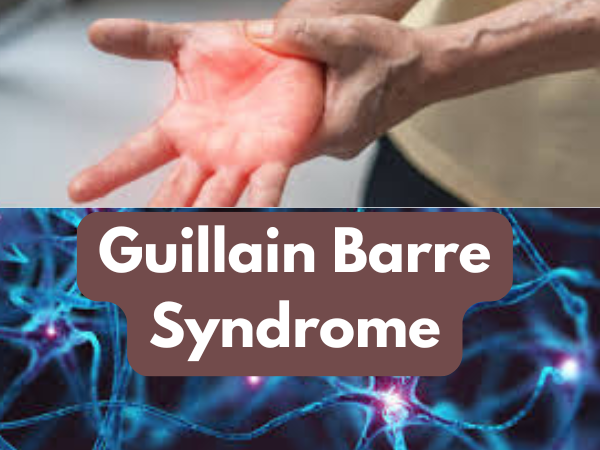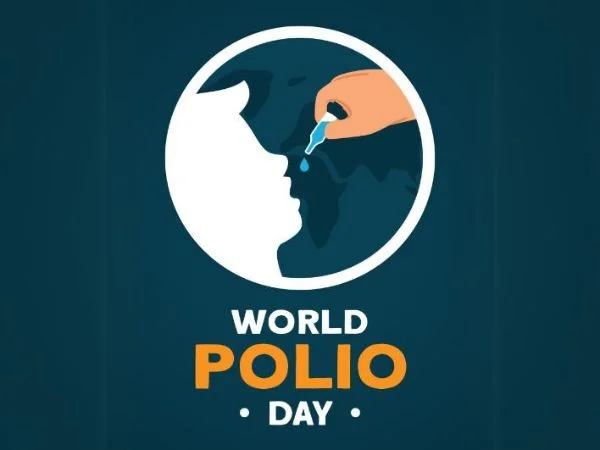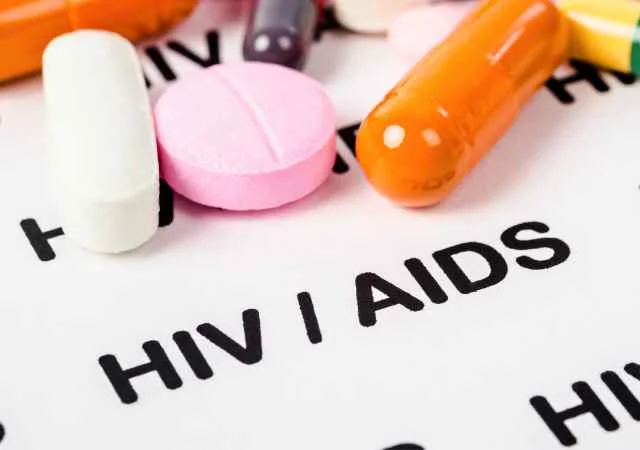Guillain Barre Syndrome (GBS) is still one of the least understood but unwholesomely autoimmune neurologic diseases of 2025. Although most readers will likely already be aware of its general definition, this blog tries to provide an updated, more complete picture beyond the fundamentals—making use of today’s medical literature, patients’ lived experiences, and contemporary care practices.

Whether you yourself are afflicted with GBS, nursing a loved one, or are just looking to be thoroughly informed, this comprehensive guide will apprise you of all you need to know, given that new treatments and variants are still relatively new as recent as the COVID pandemic. Also to understand guillain-barre syndrome life expectancy one must understand what it is all about.
What is Guillain Barre Syndrome, Really?
Guillain Barre Syndrome is most known to all as an illness that rarely happens in which the immune system of the body targets the peripheral nerves. Yet less widely understood is how rapidly GBS progresses, typically within days, and can lead to paralysis of the entire body at worst. In a report by Lancet Neurology in 2024, more than 80% of GBS nowadays start with a gastrointestinal or respiratory infection of campylobacter jejuni, dengue, or influenza. This is the direct association of infections and GBS and the highest early differential diagnostic factor.
The Guillain Barre Syndrome is a range of related syndromes with variable degree of nerve injury. Unlike static neurological conditions, the Guillain Barre Syndrome is acute and progressive and requires immediate diagnosis and treatment. Now before looking into guillain-barre syndrome life expectancy lets understand how to recognize it.
The First Signs and Worst Symptoms of GBS
The initial symptoms of Guillain Barre Syndrome are deceptively light—tingling of the feet, weakness, or weakness of legs. But within 72 hours, some patients become paraplegic or require a ventilator.
The most dangerous complications, say one study at the Mayo Clinic in 2023, are:
- Respiratory distress because of paralysis of respiratory muscles
- Cardiac arrhythmias due to autonomic dysfunction
- Quadriplegia in 20–30% of all cases
Knowing how to identify the warning signs of Guillain Barre Syndrome can be a lifesaver. Some of the common warning signs are:
- Numbness in the hands and feet
- Muscle tightness or pain
- Inability to walk or maintain balance
The most severe of the symptoms of Guillain Barre Syndrome usually manifest themselves in the autonomic nervous system, leading to an irregular heart rate, irregular blood pressure fluctuations, and incontinence.
The 4 Types of Guillain-Barré Syndrome You Need to Understand
- Acute Inflammatory Demyelinating Polyneuropathy (AIDP)
- Most frequently found in Western nations.
- Demyelination of the nerves causes muscle weakness that begins in the legs.
- Acute Motor Axonal Neuropathy (AMAN)
- More frequently found in Asia and Latin America.
- Causes more widespread and faster muscle weakness without loss of sensation.
- Acute Motor-Sensory Axonal Neuropathy (AMSAN)
- A more severe form that also affects the sensory nerves.
- Tends to lead to long recovery periods.
- Miller Fisher Syndrome (MFS)
Its rare form, characterized by weakness of muscles around the eyes, loss of coordination, and loss of reflexes. A JAMA Neurology study in 2023 reported that the AMAN and AMSAN forms are increasing, especially among patients following dengue and COVID in India. Knowledge of the 4 forms of Guillain-Barré Syndrome leads to rapid diagnosis and specific treatment.
For Guillain Barre Syndrome, one must diagnose the illness as per these 4 forms of Guillain-Barré Syndrome since the effectiveness of the treatment can be significantly different.
Diagnosis & Why Speed Matters in 2025
Diagnostic testing for Guillain Barre Syndrome has evolved considerably. Now, nerve conduction studies and spinal taps are conducted within 24 hours at most urban hospitals.
A 2025 trial in The New England Journal of Medicine demonstrates that treatment in 5 days of symptom onset decreases ICU admission by 40%. That is a pretty good reason to hospitalize early for first weakness or numbness. The time window for patients with Guillain Barre Syndrome from the onset of symptoms to total paralysis is only 48 hours at most.
Treatment Options: What is Best in 2025?
There are two broad therapies that are still the gold standard: Intravenous Immunoglobulin (IVIG) and Plasma Exchange (Plasmapharesis). It just depends on the severity, timing, and extent of GBS.
Some trials in 2024 have also attempted complement inhibitors that are also able to prevent the immune attack at the molecular level. Research-focused, they are useful for widespread AMAN and Guillain Barre Syndrome variants.
- IVIG is usually used in children and the aged people.
- Plasma Exchange is enhanced earlier but needs ICU admission.
- Combination treatment is under investigation, especially for relapsing instances of Guillain Barre Syndrome or of the AMSAN type. Studies indicate that this can reduce recovery time by 30%.
- Treatment varies deeply with which of the 4 types of Guillain-Barré Syndrome are diagnosed. Treatment according to type ensures greater success in neurological improvement.
Living with GBS: What is the Life Expectancy Outlook
The life expectancy scenario of Guillain Barre Syndrome was improved in 2025. Early intervention permits 85% of the patients to recover to a disability-free status or, at best, minor deficits. However, in other patients, there can be permanent nerve damage.
A cohort study in 2023 by WHO followed 3,000 GBS patients worldwide and noted:
- 15% had persistent mobility problems after 12 months
- 5% were respirator dependent for more than a year
- 2–3% had a recurrence within 3 years
Nutrition Advice: What Not to Eat for GBS Patients
Diet is a second-order factor in healing. Some foods potentially can be inflammatory or irritating to the nerves and should be avoided in and after treatment for EAES.
Avoid:
- Processed foods (inflammatory)
- Artificial sweeteners (interfere with nerve impulses)
- Large amounts of alcohol or caffeine (exacerbate autonomic dysfunction)
A 2024 Harvard study found that patients on anti-inflammatory diet (omega-3, vitamin B12, antioxidants) had 23% improved neuromuscular healing at 6 months.
Guillain Barre Syndrome patients must consult a clinical nutritionist who can personalize their diet to assist in repairing the nerves. Diet is not a lifestyle with Guillain Barre Syndrome—it’s therapy.
FAQs
1.What are the worst symptoms of Guillain-Barre Syndrome?
– The worst are respiratory failure, irregular heart rhythm, and total paralysis. Ventilator dependence for weeks in others. Guillain Barre Syndrome progresses very quickly, and if these warning signs early on, it really does make a big difference.
2.What to avoid eating for GBS?
- Steer clear of inflammatory foods such as processed foods, salt, and sugar. These worsen the inflammation of nerves and prolong the recovery time. Nutrition is strictly addressed in order to recover from Guillain Barre Syndrome.
3.What is the most effective treatment of GBS?
- IVIG and Plasma Exchange are still the gold standard. It will rely on timing, seriousness, and type (of the 4 forms of Guillain-Barré Syndrome). New biologic agents are under research in clinical trials.
4.What is the initial symptom for GBS?
- It is typically numbness or tingling of the hands or feet followed by muscle ascending weakness. Guillain Barre Syndrome usually begins slowly and gets worse over days or hours.
Last Thoughts: Coping with GBS in 2025
Guillain Barre Syndrome can be handle in a right way, complex medical data, and long treatment. Due to newer diagnostic and therapeutic modalities becoming more prevalent in the world, results are even more favorable—still, awareness in the early stages is the best resource. Whether one is conducting research as an individual, for a loved one, or as a professional, understanding the 4 types of Guillain-Barré Syndrome and implications, and learning about Guillain-Barre Syndrome life expectancy assists in making informed choices and optimistic recoveries.


